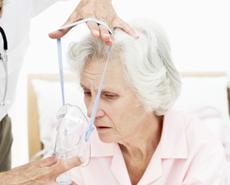People hospitalised with asthma less likely to die from swine flu
26 Sep 2011
Research by the University of Liverpool has found that people with asthma who are admitted to hospital with pandemic H1N1 (swine flu) are half as likely to die or require intensive care than those without asthma.
 The study found that despite asthma being among the commonest illnesses seen in patients admitted to hospital with H1N1, they had less severe outcomes. This was in spite of the fact that asthma patients had more severe breathing problems and similar rates of pneumonia at the time they went to hospital as people with the condition.
The study found that despite asthma being among the commonest illnesses seen in patients admitted to hospital with H1N1, they had less severe outcomes. This was in spite of the fact that asthma patients had more severe breathing problems and similar rates of pneumonia at the time they went to hospital as people with the condition.
Dr Malcolm Semple, from the Institute of Translational Medicine at the University of Liverpool, said, ''Pandemic flu can cause severe disease in people of all ages and those with asthma have a particularly high risk of hospital admission. Our results are the first to show that people with pandemic and asthma for which they took regular inhaled steroids required less intensive treatment and had a better chance of recovering from H1N1. Prompt admission and appropriate hospital treatment of patients with asthma significantly improved their chance of recovery from pandemic influenza.''
The study which involved a number of Universities and NHS Trusts looked at 1,520 patients who were admitted to 75 hospitals in 31 cities in the UK with the H1N1 virus. Of these 31 per cent (480) of the people studied were under 16 years of age. Asthma was the most common illness affecting 25 per cent (385) of all patients.
The results showed that people with asthma and H1N1 more often had shortness of breath, more need for supplemental oxygen and greater severe respiratory distress than patients with H1N1 who did not have asthma. However, overall, people with asthma were half as likely to die or require high dependency or intensive care in hospital, than those without the disease.
The link between asthma and less severe outcomes was seen even after the researchers took into account age, presence of other illnesses, and both antiviral and antibiotic use.
Researchers believed that what seemed to make the difference was down to patients with asthma coming to hospital earlier in the course of their H1N1 disease than other patients with flu.
Also, the patients with asthma who had less severe outcomes were taking regular inhaled steroids at the time of hospitalisation and received further steroids on admission.
In general, people with asthma are at risk of breathing trouble with infections, including H1 N1. When the lungs of people with asthma are infected with a virus, mucus and cells move into the narrow airways which blocks the free movement of air.
The research was announced at the European Respiratory Annual Congress 2011 in Amsterdam.






























